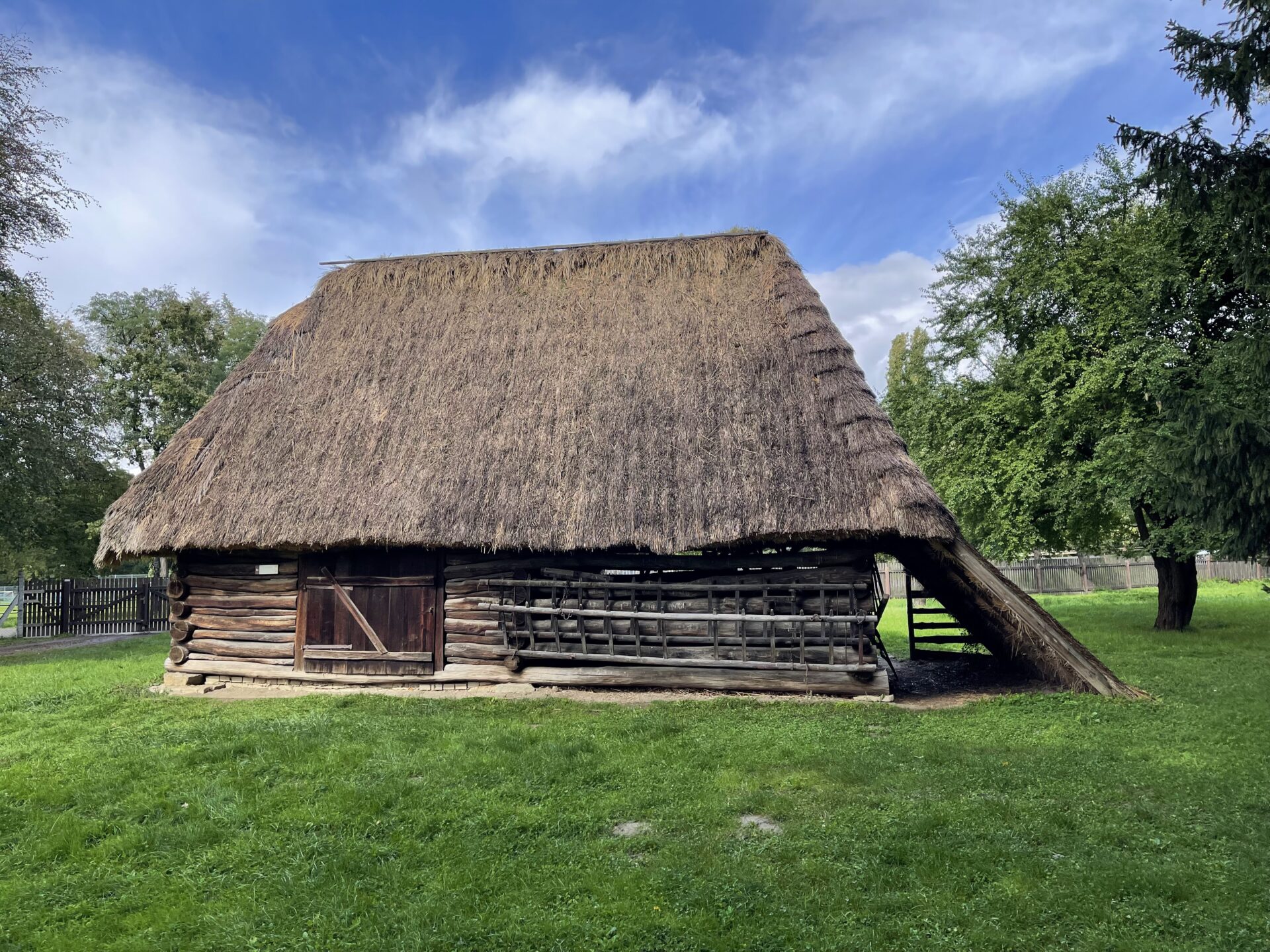This article has partner links that I may receive compensation from at no cost to you. Thank you for supporting my site by using them!
Travel helps us get to know other cultures. We visit new places & experience their customs, food & drink, and other aspects of their lives. But for the most part, we are only experiencing current life in that place. What about everything from the past that helped shape that area to make it what it is today? In the case of the Czech Republic, the Strážnice Open-Air Museum in South Moravia is a fantastic place to learn about 19th-century Czech life.
The Strážnice Open-Air Museum (official website) is the largest open-air folk museum in the Czech Republic. It is located not far from the Slovakian border in the Moravian village of Strážnice. It’s about 2 hours away from Brno by train (with connections) or 60-90 minutes by car. The museum is on the Bata Canal, with canal boat rides departing from across the bridge. First opened in 1981, it is open to the public from May to October each year. The Strážnice International Folklore Festival, the oldest & largest folk festival in Europe, occurs in the town each June.

There are a few options for visiting the Strážnice Open-Air Museum, which is run by The National Institute of Folk Culture. Visitors can take guided tours or self-guided tours with wine tasting. The two main tours focus on human life (childbirth, weddings, and death) and human work (various trades and professions) respectively, though there are also special seasonal tours. The tours are especially popular with school groups. My Strážnice tour focused mostly on work, along with special demonstrations that were taking place for the autumn season.
The main building of the Strážnice Open-Air Museum was originally a brewery. Today it houses the museum entry, as well as a nice shop with traditional crafts and local wine.

Outside, there are five different areas representing parts of southeast Moravia such as Moravian Kopanice, Luhačovice Zálesí, & Horňácka. Everything on the site is built to evoke the landscape. There are dozens of historic buildings at Strážnice. The wooden buildings are originals transported from elsewhere. In each house, guides in costume talk about specific topics regarding 19th-century life and work.
Book your hotel in Brno & South Moravia now!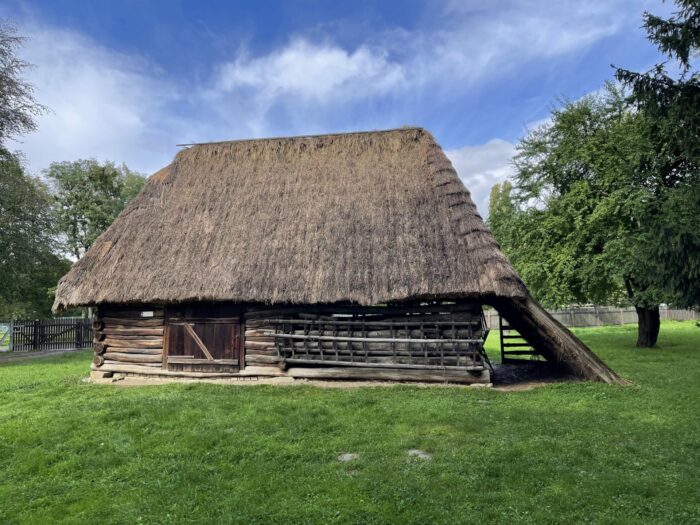
Along the walk to the first buildings of the Strážnice folk museum, we stopped to see a demonstration of a horse plowing a potato field. Not only did the horse plow the dirt, but it also left a big, steaming pile of fertilizer. You can’t beat that for authenticity.

Inside a straw-roofed barn, there was a game-keeping exhibition. Forest animals were used for crafts & food. Nobility paid men to guard the animals against poachers.

Other historic buildings were built from clay. Local residents sometimes added pig hair to strengthen the bricks. That way nobody could huff and puff and blow them down.

Later, we saw a pig & her piglets, plus other animals such as chickens and sheep.
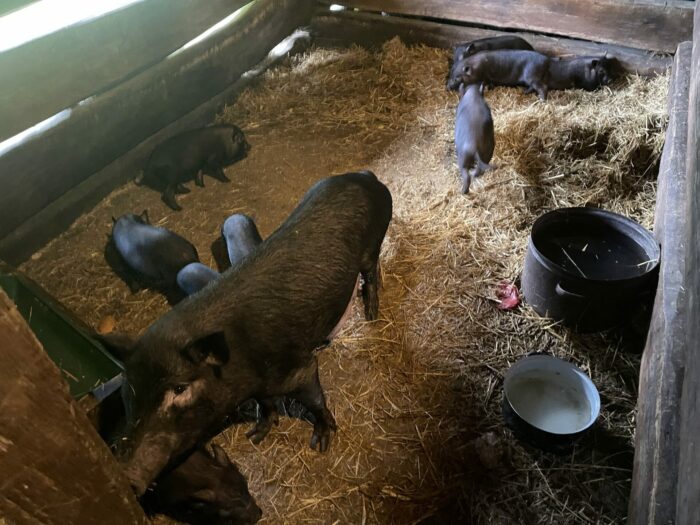
This water engine still works for sawing. We also visited the smithery, and a tobacco production & drying room.
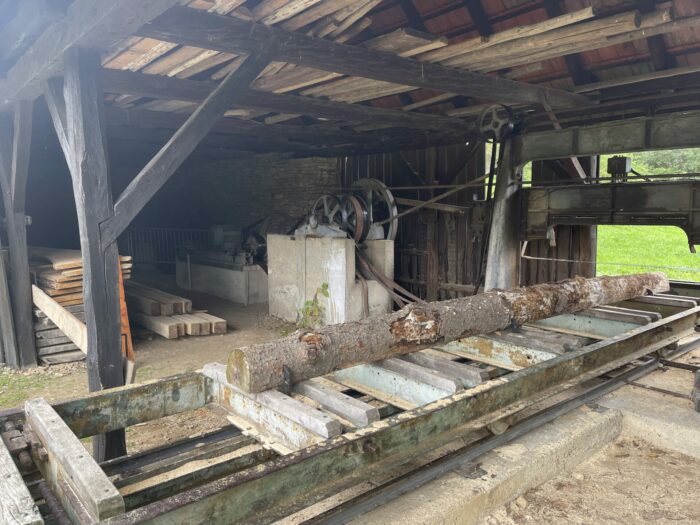
One demonstration covered the baking of a local Czech pastry with cabbage and caraway.
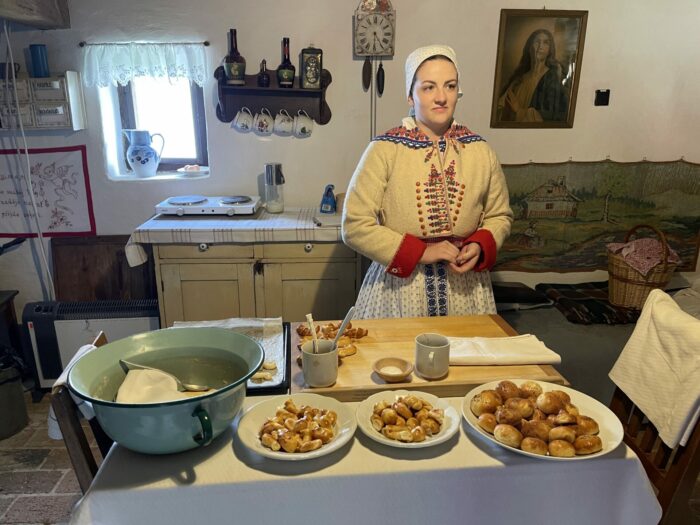
Another food demonstration showed how sauerkraut used to be created. First, they would grate cabbage. Salt was added to create fermentation. Then, a small child would step on the shredded cabbage to squeeze all of the liquid out. This prevented the sauerkraut from getting moldy.
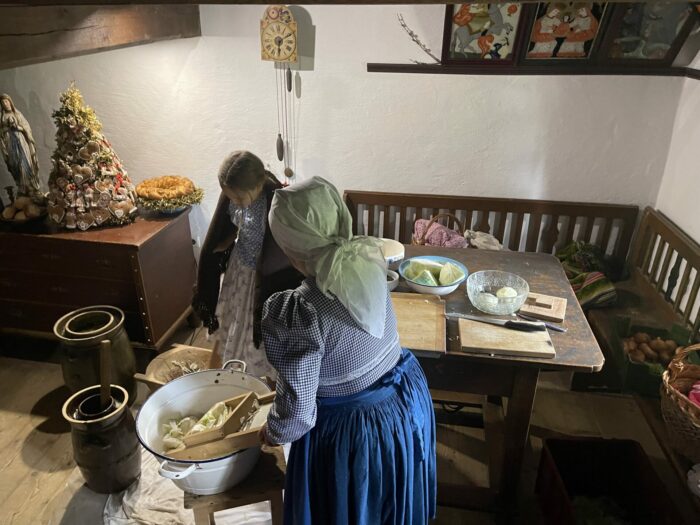
Decorating Czech gingerbread cookies (Perníčky) is a popular activity, especially around Christmas. We each got a cookie to decorate with icing while we drank burčák. I decorated mine with a 3D thatched roof like the ones we had seen earlier on the Strážnice tour.
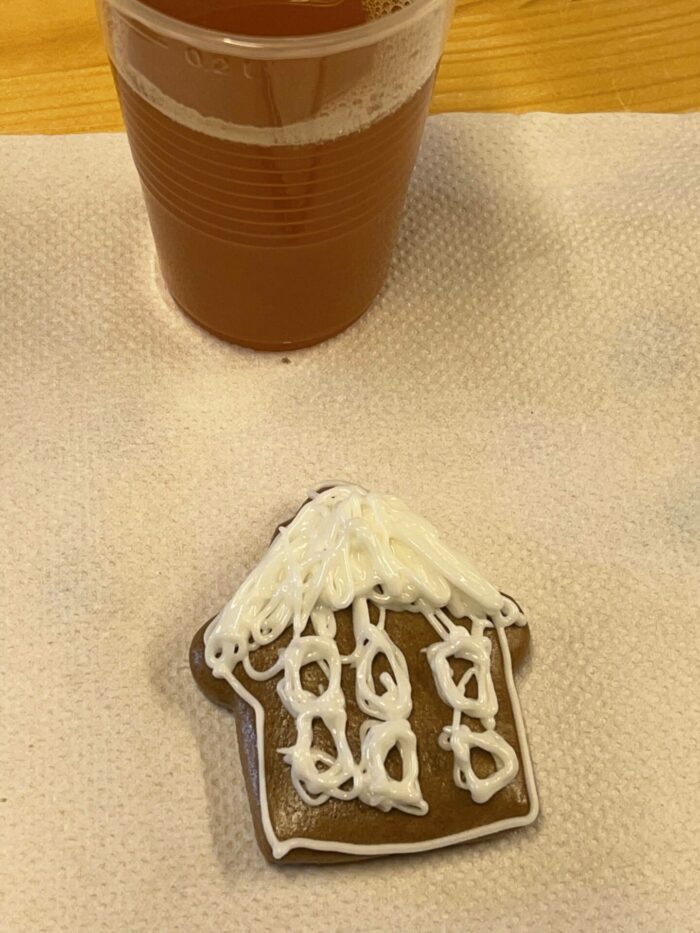
You can also buy iced gingerbread cookies that don’t look like they were decorated by a drunk child.
The final food demonstration at the Strážnice Open-Air Museum was plum butter making. Plum butter has historically been a big part of Czech cooking, as it was the only way of getting something sweet with no other sources of sugar.
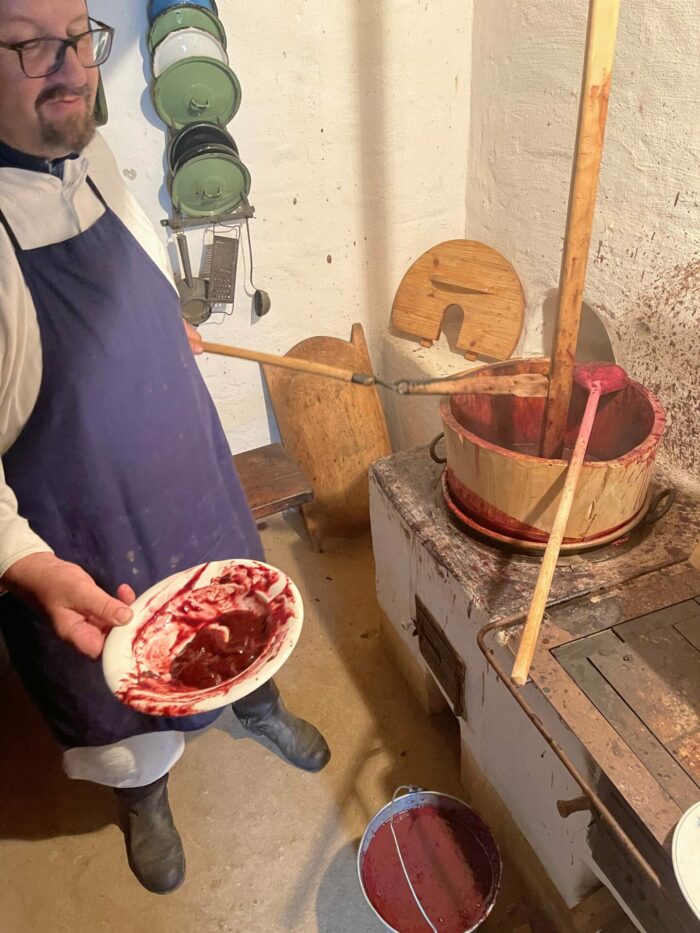
Plum butter takes days to make. It must be mixed constantly, otherwise, it will burn. This batch of plum butter was 16 hours into cooking, but still wasn’t even half done. When finished, the plum butter will then last for years.
Next door was the weaving room. Textiles were made from flax or hemp, then later cotton when it became available.
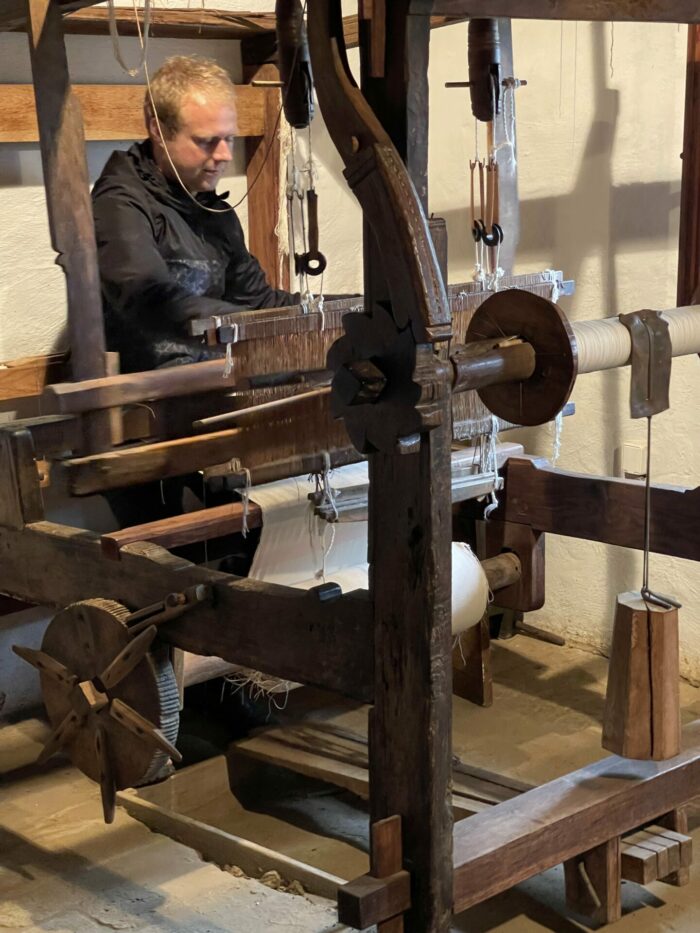
The path back to the entrance followed through the old vineyard. This area contains wine press houses.


While the activities we saw demonstrated at the folk museum in Strážnice are only done on special occasions, the places we visited still offer talks during each tour. Between all of the people we met and the plentiful informational signs around the grounds, the Strážnice Open-Air Museum is an excellent place to learn about 19th-century Czech life in South Moravia.
Here are some great Brno tours & activities & other things to see & do in Brno.
If you’re looking for a place to stay in Brno, check out these hotels.
Note: My visit to the Strážnice Open-Air Museum was a Traverse press trip hosted by South Moravia. All opinions are 100% my own.

